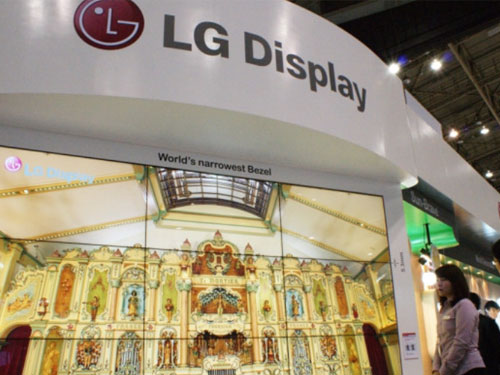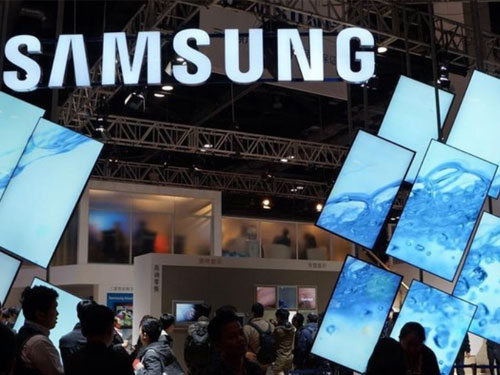LG, Samsung have given up on LCD main push OLED panel
 In addition, South Korea's major tech giant Samsung has been closing its 7th-generation line factory and two 5th-generation factories for three consecutive years. The company is now focusing on building two large-scale OLED panel manufacturing facilities. In 2017 alone, Samsung allocated $8.8 billion to expand production capacity, converting some LCD screen factories into organic display factories.
In addition, South Korea's major tech giant Samsung has been closing its 7th-generation line factory and two 5th-generation factories for three consecutive years. The company is now focusing on building two large-scale OLED panel manufacturing facilities. In 2017 alone, Samsung allocated $8.8 billion to expand production capacity, converting some LCD screen factories into organic display factories.
 In July this year, LGD also announced the establishment of a new joint venture OLED panel factory in Guangzhou, with an investment of approximately 180 billion yen. This will be LGD’s first large-scale OLED factory in China. Once operational, challenges such as OLED cost and production capacity are expected to gradually be resolved.
It’s clear that Korean manufacturers are accelerating the phase-out of smaller and medium-sized LCD panels, signaling a strong push toward OLED technology. However, this shift has led to a tight supply of small and medium-sized LCD panels, especially for mobile phone displays, which are becoming even more scarce.
Currently, only four, five, and six-generation plants for small and medium-sized panels remain in operation, with only a few companies like AUO, Innolux, Caijing, and Huaying still active. Although the competition between LCD and OLED is intensifying, it remains difficult to predict a clear winner in the short term.
Industry analysis suggests that the life cycle of LCD TV business could last at least 5 to 10 years. Especially in the large-screen TV market, LCDs are still booming due to limited OLED production capacity and high prices. Meanwhile, several upstream LCD panel companies in China remain optimistic about large-size LCDs and have started investing in new factories. As a result, domestic panel manufacturers are poised to seize new opportunities.
LCD panels are not going away anytime soon, and OLEDs won’t immediately dominate the market either. However, over the next 5 to 10 years, the color TV display industry is expected to undergo significant changes. That said, any superior technology still needs supporting content to truly thrive.
In July this year, LGD also announced the establishment of a new joint venture OLED panel factory in Guangzhou, with an investment of approximately 180 billion yen. This will be LGD’s first large-scale OLED factory in China. Once operational, challenges such as OLED cost and production capacity are expected to gradually be resolved.
It’s clear that Korean manufacturers are accelerating the phase-out of smaller and medium-sized LCD panels, signaling a strong push toward OLED technology. However, this shift has led to a tight supply of small and medium-sized LCD panels, especially for mobile phone displays, which are becoming even more scarce.
Currently, only four, five, and six-generation plants for small and medium-sized panels remain in operation, with only a few companies like AUO, Innolux, Caijing, and Huaying still active. Although the competition between LCD and OLED is intensifying, it remains difficult to predict a clear winner in the short term.
Industry analysis suggests that the life cycle of LCD TV business could last at least 5 to 10 years. Especially in the large-screen TV market, LCDs are still booming due to limited OLED production capacity and high prices. Meanwhile, several upstream LCD panel companies in China remain optimistic about large-size LCDs and have started investing in new factories. As a result, domestic panel manufacturers are poised to seize new opportunities.
LCD panels are not going away anytime soon, and OLEDs won’t immediately dominate the market either. However, over the next 5 to 10 years, the color TV display industry is expected to undergo significant changes. That said, any superior technology still needs supporting content to truly thrive.Ethylene-Propylene-Diene Monomer
EPDM Rubber Cold Shrink Tube is a kind of equipment used on power and communication cables indoor, outdoor, overhead, in water or buried.
EPDM rubber is a terpolymer of ethylene, propylene and non-conjugated diolefin.EPDM rubber has excellent mechanical properties, puncture resistance and high tear resistance, weather resistance, ultraviolet resistance, ozone aging resistance, acid and alkali resistance, salt spray corrosion resistance, resistance to high and low temperatures of up to -55 ℃ ~ +150 ℃, it is the ideal sealing material for communication cables, coaxial cables, and medium and low-voltage power cables.
Ethylene-Propylene-DieneMonomer,EPDM cold shrink tube,Cold Shrink Tube,Cold Shrinkable tubing,Cold-shrink tube,EPDM
Mianyang Dongyao New Material Co. , https://www.mydyxc.com